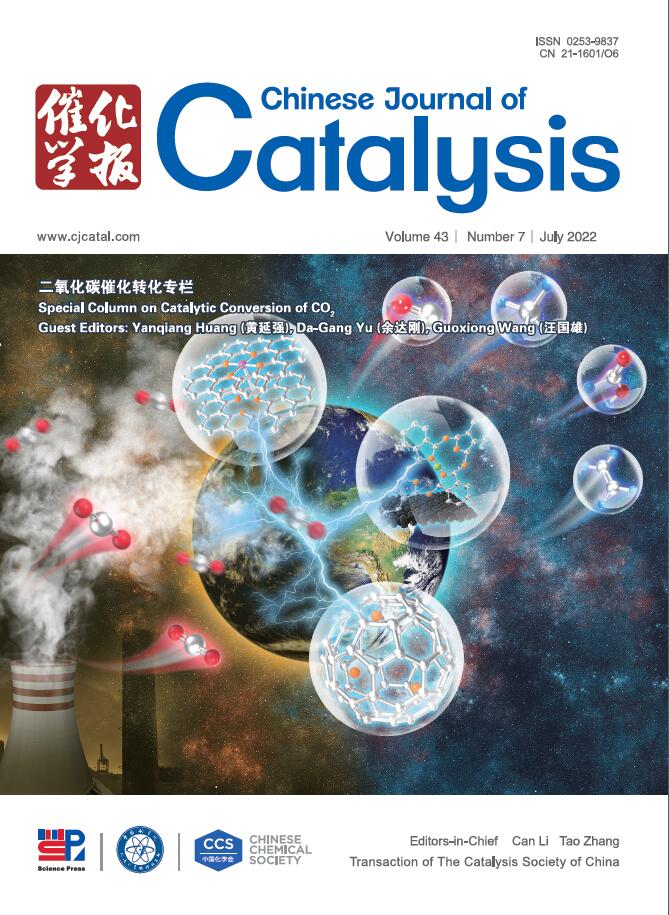A visible-light-driven CoS2/CuS@CNT-C3N4 photocatalyst for high-performance rechargeable zinc-air batteries beyond 500 mW cm–2
IF 15.7
1区 化学
Q1 CHEMISTRY, APPLIED
引用次数: 0
Abstract
ABSTRACT
Storing solar energy in battery systems is crucial to achieving a green and sustainable society. However, the efficient development of photo-enhanced zinc-air batteries (ZABs) is limited by the rapid recombination of photogenerated carriers on the photocathode. In this work, the visible-light-driven CoS2/CuS@CNT-C3N4 photocatalyst with unique petal-like layer structure was designed and developed, which can be used as air electrode for visible-light-driven ZABs. The superior performance of ZABs assembled by CoS2/CuS@CNT-C3N4 was mainly attributed to the successful construction of Schottky heterojunction between g-C3N4 and carbon nanotubes (CNTs), which accelerates the transfer of electrons from g-C3N4 to CoS2/CuS cocatalysts, improves the carrier separation ability, and extends the carrier lifetime. Thereinto, the visible-driven ZABs assembled by CoS2/CuS@CNT-C3N4 photocatalyst has a power density of 588.90 mW cm–2 and a charge-discharge cycle of 643 h under visible light irradiation, which is the highest performance ever reported for photo-enhanced ZABs. More importantly, the charge-discharge voltage drop of ZABs was only 0.54 V under visible light irradiation, which is significantly lower than the voltage drop (0.94 V) in the dark. This study provides a new idea for designing efficient and stable visible-light-driven ZABs cathode catalysts.
一种可见光驱动的CoS2/CuS@CNT-C3N4光催化剂,用于500mw cm-2以上的高性能可充电锌-空气电池
摘要在电池系统中储存太阳能对于实现绿色和可持续发展的社会至关重要。然而,光增强锌-空气电池(ZABs)的高效发展受到光电阴极上光电生成载流子快速重组的限制。本研究设计并开发了具有独特花瓣状层结构的可见光驱动CoS2/CuS@CNT-C3N4光催化剂,可作为可见光驱动ZABs的空气电极。CoS2/CuS@CNT-C3N4组装ZABs的优异性能主要归功于g-C3N4与碳纳米管(CNTs)之间成功构建了Schottky异质结,加速了电子从g-C3N4向CoS2/ cu共催化剂的转移,提高了载流子分离能力,延长了载流子寿命。其中,CoS2/CuS@CNT-C3N4光催化剂组装的可见驱动ZABs的功率密度为588.90 mW cm-2,在可见光照射下的充放电周期为643 h,是目前报道的光增强ZABs的最高性能。更重要的是,ZABs在可见光照射下的充放电压降仅为0.54 V,明显低于黑暗条件下的0.94 V。该研究为设计高效、稳定的ZABs可见光驱动阴极催化剂提供了新的思路。
本文章由计算机程序翻译,如有差异,请以英文原文为准。
求助全文
约1分钟内获得全文
求助全文
来源期刊

Chinese Journal of Catalysis
工程技术-工程:化工
CiteScore
25.80
自引率
10.30%
发文量
235
审稿时长
1.2 months
期刊介绍:
The journal covers a broad scope, encompassing new trends in catalysis for applications in energy production, environmental protection, and the preparation of materials, petroleum chemicals, and fine chemicals. It explores the scientific foundation for preparing and activating catalysts of commercial interest, emphasizing representative models.The focus includes spectroscopic methods for structural characterization, especially in situ techniques, as well as new theoretical methods with practical impact in catalysis and catalytic reactions.The journal delves into the relationship between homogeneous and heterogeneous catalysis and includes theoretical studies on the structure and reactivity of catalysts.Additionally, contributions on photocatalysis, biocatalysis, surface science, and catalysis-related chemical kinetics are welcomed.
 求助内容:
求助内容: 应助结果提醒方式:
应助结果提醒方式:


